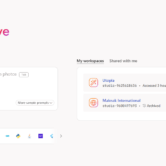
How to Run an Effective Blog in 2025: The Ultimate Guide
Introduction
Blogging remains a powerful medium for sharing ideas, building authority, and even generating income – but the landscape has evolved dramatically! In 2025, running an effective blog requires much more strategic thinking than simply publishing posts and hoping for the best.
Whether you’re just starting out or looking to revitalize an existing blog, understanding the fundamentals of content strategy, audience engagement, and technical optimization is crucial for success. According to recent statistics, blogs that publish consistently see 67% more leads than those that don’t, highlighting the importance of a systematic approach to blogging. Ready to transform your blog into a high-performing digital asset? Let’s dive into the essential strategies that will help you run a truly effective blog! How to run an effective blog in 2025.
Understanding Your Blog’s Purpose and Audience
Let me tell you something I learned the hard way – running a blog without knowing exactly who you’re talking to is like shouting into the void. Trust me, I spent my first year blogging about everything under the sun because I thought more topics meant more readers. Boy, was I wrong! My traffic was abysmal, and the few comments I got were all over the place.

The turning point came when I sat down and actually figured out why I was blogging in the first place. Was it to build my personal brand? Generate leads for my business? Make money through affiliates? Once I decided that thought leadership in digital marketing was my goal, everything got clearer. I started picturing my ideal reader – a marketing manager at a mid-sized company who needed actionable advice, not just theory. How to run an effective blog in 2025.
Creating audience personas isn’t just some fancy marketing exercise – it’s crazy helpful. I literally wrote out details about “Marketing Maria,” including her age, job challenges, and what kept her up at night. When I started writing specifically for her, my engagement went through the roof! People started commenting stuff like “It’s like you’re in my head” – that’s when I knew I was onto something.
One mistake I see newbie bloggers make is trying to compete head-on with the big names in their niche. That’s a losing battle, folks. Instead, I spent a week analyzing what my competitors weren’t covering and found my sweet spot: practical implementation guides for small marketing teams. No one was really doing that well, and it became my unique angle.
Your value proposition doesn’t have to be complicated. Mine was simply: “Actionable marketing strategies explained in plain English, with templates you can implement today.” Nothing fancy, but it resonated with my audience because it solved a specific problem they had. How to run an effective blog in 2025.
The voice you use matters more than you’d think. I tried being all formal and professional at first, and my content fell flat. When I switched to writing like I talk – with a bit of humor and occasional rants about marketing jargon – people started engaging more. Be yourself! Readers can smell inauthenticity from a mile away.
Research doesn’t have to be boring or time-consuming. I spend about 30 minutes a week in virtual communities where my target audience hangs out, just listening to their questions and frustrations. That’s given me more blog topic ideas than I could ever use, and they’re all problems my audience actually wants solved.
Creating a Sustainable Content Strategy
I’ve never been the most organized person but lemme tell you – trying to run a blog without an actual plan is a recipe for disaster. I learned this the hard way when I went through a three-month stretch where I barely published anything because I couldn’t figure out what to write about each week. Talk about stressful!
The game-changer for me was setting up a simple list in a spreadsheet – nothing fancy, just dates and topics. I started by committing to just one quality post per week, which felt doable even with my busy tech schedule. When I tried pushing to three posts weekly because I read some “expert” advice, I nearly burned out by month two. Find your sustainable pace, folks!
One thing that totally revolutionized my approach was the concept of content pillars. I identified four main topics that would form the foundation of my blog: content creation, SEO basics, audience building, and blog monetization. Every post I planned had to fit into one of these categories, which kept me focused and stopped me from going off on random tangents that confused my readers. How to run an effective blog in 2025.
Look, I’m not gonna lie – sometimes I just don’t feel inspired to write. That’s when my content bank saves my butt! Whenever I have a random blog idea, I jot it down with a few bullet points in a document. On days when creativity ain’t flowing, I’ve got dozens of semi-developed ideas ready to go. Such a lifesaver!
Here’s a mistake I made early on: not setting content standards. Some of my posts were super detailed with 2,000+ words, while others barely hit 500. My audience got confused about what to expect. Now I have guidelines about post length, formatting, image usage, and tone that ensure consistency. It makes writing easier for me and reading more enjoyable for my audience.
Mastering Blog Content Creation
Writing blog posts used to feel like pulling teeth for me. I’d stare at that blank screen, cursor blinking mockingly, and wonder why I ever thought blogging was a good idea. Sound familiar? The breakthrough came when I developed a consistent process – I now start every post with a brain dump of everything I know about the topic. No structure, no editing, just getting it all out there. It’s messy as heck, but it works!
Headlines are make-or-break in this game, y’all. I used to slap on whatever title came to mind and wonder why nobody clicked. Then I started studying the headlines that made ME click and noticed patterns. Now I spend at least 15 minutes crafting headlines that promise a specific benefit or solution. My click-through rates jumped almost immediately!
Let’s talk about formatting, because it’s way more important than I initially thought. My early posts were these massive walls of text that probably scared readers away. I remember getting feedback from a friend who straight-up told me, “I couldn’t finish it – my eyes got tired.” Ouch! Now I break everything up with subheadings, bullet points, and plenty of white space. My average time on page has nearly doubled since making this change. How to run an effective blog in 2025.
The structure of your posts matters big time. I follow a simple framework for most of my posts: problem → solution → steps → examples → potential challenges → wrap-up. This gives readers a natural flow to follow and helps me organize my thoughts. I don’t rigidly stick to it for every single post, but having this template in my back pocket has saved me tons of time.
Can we talk about images for a sec? I used to think they were just decorative, but holy moly was I wrong! Adding relevant images, screenshots, and infographics has boosted my social shares dramatically. I’m no designer, so I use simple tools like Canva, and even my basic visuals make a difference. Just make sure they actually add value – random stock photos of people pointing at computers ain’t gonna cut it. How to run an effective blog in 2025.
One thing that took me forever to figure out was the right content depth. I started with super basic “5 tips” style posts that barely scratched the surface, then overcorrected with exhaustive guides that took me weeks to write. The sweet spot, I’ve found, is comprehensive enough to actually solve the reader’s problem but focused enough to be digestible in one sitting. Nobody wants to read your 10,000-word manifesto, trust me.
Writers’ block hits everyone, but here’s my weird trick: I write the conclusion first! Getting clear on where I want to take the reader helps me plot the journey to get there. And sometimes, I’ll write sections completely out of order based on what I’m most excited about that day. The magic of digital writing is that you can rearrange everything later! I call it artistic freedom.
SEO Fundamentals for Bloggers
The real game-changer was when I stopped obsessing over search volume and started focusing on search intent. Who cares if a keyword gets 10,000 searches if none of those people want what you’re offering? I now spend time analyzing the top results for any keyword I’m targeting to understand exactly what problem users are trying to solve. Total light bulb moment for me!
Keyword research doesn’t have to be complicated or expensive. I started with free tools like Answer the Public and Google’s “People Also Ask” section. These gave me tons of ideas about what my audience was actually searching for. One of my most successful posts came from a question I spotted repeatedly in the PAA section that none of the big players in my niche had answered thoroughly.
On-page optimization used to make my eyes glaze over until I created a simple checklist for myself. Now I make sure my keyword appears in the title (ideally near the beginning), the URL, the first paragraph, and at least one H2 heading. I also include relevant semantic keywords throughout the post – not because I’m trying to game the system, but because they help make my content comprehensive. It’s become second nature now.
Internal linking is something I slept on for way too long. I had all these great posts sitting in isolation, not helping each other out! Now I religiously link to at least 3-4 relevant posts within each new article I publish. I’ve also gone back through my most popular posts and added links to newer content. My average session duration jumped by almost a minute after implementing this strategy – that’s huge! How to run an effective blog in 2025.
Technical SEO scared the crap outta me initially – all that talk about sitemaps and robots.txt files made my head spin. But honestly? The basics aren’t that hard. I made sure my site loads fast by optimizing images and using a caching plugin. I fixed any broken links with a simple free tool. And I created a proper site structure with categories that make sense for both humans and search engines. These changes alone boosted my organic traffic by about 30% over three months.
Core Web Vitals matter more than you might think! My site was painfully slow on mobile, and I couldn’t figure out why until I ran it through Google’s PageSpeed Insights. Turned out my theme was super bloated, and my images were way too large. Switching to a lighter theme and compressing my images shot my mobile performance score from 43 to 87. The traffic increase was almost immediate!
Common SEO mistake I see bloggers make: creating content for Google instead of people. Listen, I’ve been there – analyzing keywords until I’m cross-eyed and then writing robotic content that checks all the technical boxes. But that approach never worked for me. My best-performing posts are the ones where I genuinely help my readers solve a problem, with SEO as a supporting player, not the star of the show. How to run an effective blog in 2025.
Building and Engaging Your Audience
Building an audience is hands-down the toughest part of blogging. I remember publishing posts in the early days and literally hearing crickets. Zero comments, no shares, just the sound of my dreams crashing down! It took me almost a year to realize that content alone doesn’t magically attract readers – you gotta actively build community.
Social media felt like shouting into the void until I got strategic about it. I was spreading myself too thin across six different platforms and getting nowhere fast. When I decided to focus primarily on Instagram and Whatsapp (where my audience of teacher-bloggers actually hung out), my traffic tripled within months. The lesson? Pick 1-2 platforms and do them really well instead of being mediocre everywhere.
Comments are gold, y’all! I used to get so discouraged by the lack of comments that I almost disabled them altogether. Then I realized I wasn’t actually encouraging conversation. Now I end every post with a thought-provoking question, and I respond to every single comment within 24 hours. It’s created this awesome snowball effect where regular commenters feel like part of a community and new readers are more likely to join in. How to run an effective blog in 2025.

Community building takes time, and there’s no shortcut. I tried rushing it with giveaways and contests that attracted lots of drive-by traffic but no real engagement. The strategy that’s worked best for me is consistency – showing up regularly with valuable content, replying to every email, and generally being a real human being rather than a content machine. My audience grew slower this way, but it’s so much more engaged.
One mistake I made was ignoring the power of personal connection. For the longest time, I hid behind my blog persona, afraid to show the real me. When I finally started sharing occasional personal stories and behind-the-scenes glimpses of my life (within reasonable boundaries), engagement skyrocketed. Readers connect with people, not faceless brands – even if it makes you feel a bit vulnerable at first.
Measuring and Optimizing Blog Performance
Analytics used to make my eyes glaze over – all those numbers and charts felt overwhelming! I avoided looking at my stats for months because I didn’t know what mattered. Big mistake! Once I got over my fear and figured out which metrics actually mattered for my goals, the data became my secret weapon for growing my blog.
I remember obsessing over pageviews in the beginning, getting excited when I hit 1,000 monthly visitors. But then I had a reality check when I realized those visitors weren’t signing up for my email list or buying my products. Now I focus on conversion rates and engagement metrics instead. A smaller, engaged audience is way more valuable than tons of drive-by traffic that doesn’t stick around.
Content audits changed everything for me. I used to think once a post was published, my job was done. Then I did my first content audit and discovered that 80% of my traffic came from just 20% of my posts! This was a total eye-opener. I now regularly update my top-performing posts to keep them fresh and relevant, and I’m not afraid to remove or redirect content that’s underperforming. My traffic actually increased after I deleted about 30 outdated posts!
Bounce rate was a metric that confused me for ages. I had posts with high bounce rates that I thought were failures until I realized they were actually answering questions so effectively that people didn’t need to look further! Now I interpret bounce rate in context with other metrics like time on page and completion rate. A high bounce rate on a comprehensive guide is concerning, but on a quick answer post, it might just mean you’ve done your job well. How to run an effective blog in 2025.
Conclusion
Running an effective blog in 2025 requires a strategic approach that goes far beyond simply publishing content. By defining your purpose, understanding your audience, creating valuable content, optimizing for search engines, engaging your community, and measuring your results, you can build a blog that truly achieves your business goals. I’ve made plenty of mistakes along the way – from chasing vanity metrics to spreading myself too thin across platforms – but each one taught me valuable lessons that improved my blogging game.
Remember that consistency and quality are the foundations of blogging success. Your audience needs to know what to expect from you and when to expect it. You don’t need to publish daily, but you do need to establish a rhythm your readers can count on. And while it might seem overwhelming to implement all these strategies at once, start with the fundamentals: know your audience, create valuable content that solves their problems, and build genuine connections with your readers.
The most important takeaway I can share from my years of blogging is that your blog isn’t just a collection of posts – it’s a valuable digital asset that can drive significant results for your business or personal brand. Treat it with that level of importance! Invest time in strategy, not just execution. Learn from your analytics, not just your intuition. And always, always prioritize your audience’s needs over search engines or trends. How to run an effective blog in 2025.
What’s your biggest blogging challenge right now? Share in the comments below – I’d love to hear what you’re struggling with and offer any advice I can! And if you found this guide helpful, please consider sharing it with other bloggers who might benefit. We’re all in this together!
Site architecture How to run an effective blog in 2025.
Core web vitals
Blog content distribution
Email list building
Community management
Influencer collaboration
Content planning workflow
Blog scalability How to run an effective blog in 2025.
Digital products for bloggers
Sponsored content guidelines
Blog monetization models How to run an effective blog in 2025.
Content consistency
Mobile optimization for blogs
Blog performance metrics
On-page SEO for blogs
Technical blog optimization
Internal linking strategy How to run an effective blog in 2025.
Social media integration
Reader engagement tactics How to run an effective blog in 2025.
Blog post structure
Content quality standards
Long-form content
Visual content for blogs How to run an effective blog in 2025.
Blog comment strategies
Guest blogging
Affiliate marketing for blogs
Blog conversion optimization
Content distribution
Blog design best practices How to run an effective blog in 2025.
Writing compelling headlines
Content repurposing
Keyword research for bloggers
Blog promotion strategies
Content audit How to run an effective blog in 2025.
Niche blogging
Editorial calendar How to run an effective blog in 2025.
Blog metrics
WordPress optimization
Content promotion How to run an effective blog in 2025.
Traffic generation
Blog analytics
Email marketing for blogs
Lead magnets
Blog strategy How to run an effective blog in 2025.
Content calendar
Audience engagement
Blog monetization
SEO for blogs
Content creation process How to run an effective blog in 2025.
Blogging platforms






